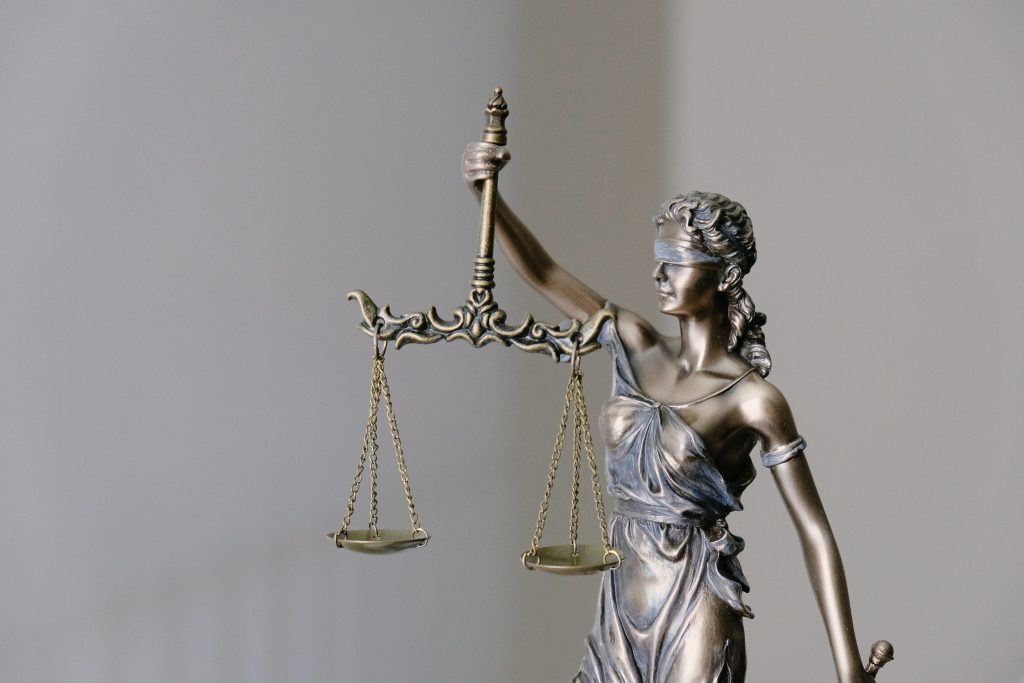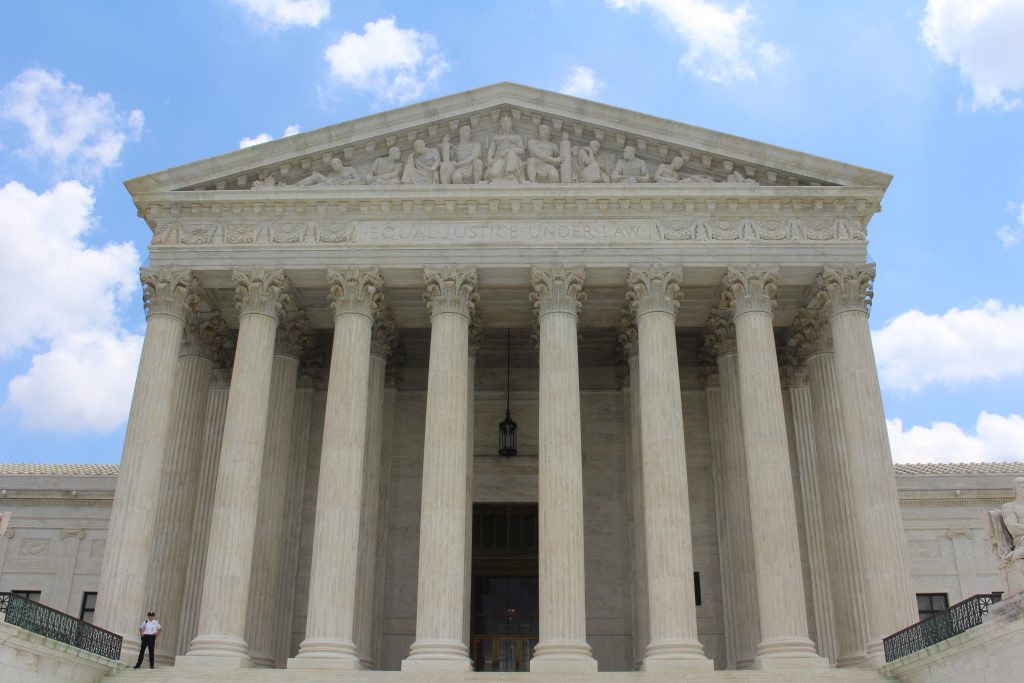In this article, you will learn about the criminal trial process. We will discuss the steps involved, from the initial arrest to the verdict. Understanding this process can help you navigate the legal system with more confidence if you are facing criminal charges. We will also provide tips on how to choose the right criminal defense attorney to represent you. By the end of this article, you will have a better understanding of what to expect during a criminal trial and how to protect your rights.

This image is property of images.unsplash.com.
Criminal Trial Process
The criminal trial process is an integral part of the legal system, ensuring that justice is served and the rights of individuals are protected. It is a complex and thorough procedure that takes place in the courtroom and follows a specific set of steps. Understanding these steps and their importance is crucial for anyone involved in the criminal justice system, whether as a defendant, a witness, or a member of the jury. In this article, we will provide an overview of the criminal trial process, its significance, and the basic steps involved.
Overview of the Criminal Trial Process
The criminal trial process is a structured legal procedure that aims to determine the guilt or innocence of an individual accused of committing a crime. It involves several stages, beginning with the pre-trial phase and culminating in the verdict and sentencing. Each step is designed to ensure a fair and unbiased trial, allowing both the prosecution and the defense to present their arguments and evidence before a jury of their peers.
Pre-Trial Phase
The pre-trial phase is the initial stage of the criminal trial process and includes several important steps that set the foundation for the trial. These steps include arrest and booking, initial appearance and bail hearing, and plea bargaining.
Arrest and Booking
The arrest and booking process occurs when a person is taken into custody by law enforcement officers for suspicion of committing a crime. The individual is typically read their Miranda rights, which includes the right to remain silent and the right to an attorney. After the arrest, the person is transported to a police station or local jail for booking. This involves the recording of personal information, fingerprinting, and taking photographs.
Initial Appearance and Bail Hearing
Following the arrest and booking, the accused is brought before a judge for their initial appearance. During this hearing, the judge informs the defendant of the charges against them and their legal rights. Additionally, the judge determines whether to release the accused on bail or to hold them in custody until the trial. This decision is based on factors such as the seriousness of the crime, the defendant’s criminal history, and their ties to the community.
Plea Bargaining
Plea bargaining is a negotiation process between the prosecution and the defense, where the accused may agree to plead guilty in exchange for a lesser charge or a reduced sentence. This step occurs before the trial begins and aims to resolve the case without the need for a lengthy trial. The decision to accept a plea bargain is made by the defendant, after consulting with their attorney and considering the potential consequences.
Jury Selection
Jury selection is a critical part of the criminal trial process, as it determines the individuals who will ultimately decide the fate of the accused. This process involves the careful selection of jurors who will hear the evidence, evaluate the credibility of witnesses, and make a judgment based on the evidence presented.
Importance of Jury Selection
Jury selection is essential in ensuring a fair and impartial trial. A jury composed of individuals from diverse backgrounds and perspectives is more likely to provide a balanced and unbiased decision. The goal is to select individuals who are open-minded, free from prejudice, and capable of rendering a fair verdict based solely on the evidence presented during the trial.
Voir Dire Process
The voir dire process is the formal questioning of potential jurors by the prosecution and defense. The purpose is to evaluate the suitability of each juror for the case at hand. The attorneys ask questions to assess the jurors’ biases, prejudices, and personal experiences that could impact their ability to be impartial. Both sides may challenge potential jurors for cause, such as a conflict of interest, or by using peremptory challenges, which allow them to exclude a certain number of jurors without providing a specific reason.
Challenges to Potential Jurors
During jury selection, both the prosecution and the defense have the right to challenge potential jurors they believe may be biased or unable to reach an impartial decision. These challenges can be made for cause or through peremptory challenges. For cause challenges are based on specific reasons, such as a relationship with the defendant or a witness. Peremptory challenges, on the other hand, do not require a reason and allow attorneys to exclude jurors based on their own judgment.

This image is property of images.unsplash.com.
Opening Statements
Once the jury has been selected, the trial begins with the opening statements from the prosecution and the defense. These statements provide an overview of their respective cases and outline the evidence they will present to support their arguments.
Purpose of Opening Statements
The purpose of the opening statements is to preview the evidence and testimonies that will be presented during the trial. This gives the jury an initial understanding of the case and helps them focus on the relevant information. Opening statements also allow the attorneys to establish credibility and build rapport with the jury. They set the tone for the trial and provide a roadmap of what each side intends to prove.
Crafting an Effective Opening Statement
Crafting an effective opening statement requires careful consideration of the key points that will resonate with the jury. Attorneys aim to create a compelling narrative that presents their client’s case in a favorable light. It is important to address the jury directly, using clear and concise language. The opening statement should capture the jurors’ attention and leave them with a favorable impression of the case.
Presentation of Evidence
The presentation of evidence is a crucial stage in the criminal trial process. This is when both the prosecution and the defense present their evidence and call witnesses to testify. It is through the presentation of evidence that the parties seek to prove their case and establish the guilt or innocence of the accused.
Types of Evidence in a Criminal Trial
In a criminal trial, various types of evidence can be presented, including physical evidence, testimonial evidence, documentary evidence, and demonstrative evidence. Physical evidence refers to tangible items, such as weapons or DNA samples, that can directly link the accused to the crime. Testimonial evidence involves statements made by witnesses under oath. Documentary evidence includes documents, such as contracts or medical records, that support a party’s claims. Demonstrative evidence includes visual aids, such as photographs or diagrams, that help illustrate key points.
Direct and Cross-Examination of Witnesses
During the presentation of evidence, the attorneys have the opportunity to question witnesses through direct and cross-examination. Direct examination is conducted by the attorney who called the witness and aims to elicit information that supports their case. Cross-examination, on the other hand, is conducted by the opposing attorney and is designed to challenge the credibility and reliability of the witness’s testimony. Both types of examination are crucial in presenting the facts to the jury and allowing them to assess witness credibility.
Admissibility of Evidence
The admissibility of evidence is a critical consideration during the presentation of evidence. The court follows strict rules regarding what evidence can be presented and how it can be presented. The judge decides whether evidence is admissible based on factors such as relevance, reliability, and whether it was obtained legally. Attorneys must ensure that the evidence they present complies with these rules in order to have it considered by the jury.

This image is property of images.unsplash.com.
Witness Testimony
Witness testimony plays a significant role in a criminal trial. Witnesses provide firsthand accounts of the events surrounding the alleged crime and offer their perspectives on the accused’s guilt or innocence.
Types of Witnesses in a Criminal Trial
There are several types of witnesses that may be called to testify in a criminal trial. Eyewitnesses provide an account of what they saw or heard at the scene of the crime. Expert witnesses have specialized knowledge or experience in a particular field and offer their opinions or analysis based on that expertise. Character witnesses testify to the defendant’s character and reputation. Their goal is to portray the accused as an individual of good character who would be unlikely to commit the alleged offense.
Witness Credibility and Impeachment
Assessing witness credibility is an essential task for the jury. They must rely on the witnesses’ testimony to make their judgment regarding the accused’s guilt or innocence. Factors such as the witness’s demeanor, consistency in their statements, and potential biases are taken into consideration. Attorneys may challenge a witness’s credibility through cross-examination or by presenting evidence that contradicts their testimony.
Expert Witness Testimony
Expert witness testimony is often crucial in criminal trials, particularly in cases involving complex scientific or technical evidence. Experts provide opinions or analysis based on their specialized knowledge or experience. Their testimony can help clarify complex concepts, interpret forensic evidence, or explain the significance of certain evidence to the jury. The credibility and qualifications of expert witnesses are often vigorously examined by both the prosecution and the defense.
Closing Arguments
After all the evidence and witness testimonies have been presented, the trial enters the closing arguments phase. In this stage, both the prosecution and the defense have the opportunity to summarize their cases and persuade the jury to reach a particular verdict.
Importance of Closing Arguments
Closing arguments are crucial in shaping the jury’s final impressions of the case. They provide attorneys with the chance to tie together the evidence and witness testimonies presented during the trial, highlighting the strengths of their respective arguments. This is the last opportunity to appeal to the jury’s emotions, summarize the key points, and help them understand why the evidence supports a particular verdict.
Presenting a Persuasive Closing Argument
Crafting a persuasive closing argument requires a deep understanding of the case, the evidence presented, and the mindset of the jury. Attorneys must be able to distill complex legal concepts into clear and compelling narratives. They should emphasize the evidence that supports their case, address any weaknesses or inconsistencies, and counter the opposing side’s arguments. A persuasive closing argument is concise, powerful, and leaves a lasting impression on the jury.
Jury Instructions
Once the closing arguments are concluded, the judge provides the jury with instructions on how to deliberate and reach a verdict.
Role and Purpose of Jury Instructions
Jury instructions serve as a guide for the jurors, outlining the legal principles and standards they must apply when deliberating the case. The instructions explain the elements of the crimes charged, the burden of proof, and the specific laws relating to the case. They ensure that the jury considers only the evidence presented during the trial and follows the applicable law in reaching their decision.
Content and Delivery of Jury Instructions
The content and delivery of jury instructions are critical in ensuring that the jurors fully understand their responsibilities and the legal standards they must apply. The instructions should be clear, concise, and free from any bias or prejudice. The judge typically provides written copies of the instructions to the jury and may also verbally summarize them to ensure comprehension.
Deliberation
After receiving the jury instructions, the jurors retire to the deliberation room to discuss the evidence and reach a unanimous verdict.
Process of Jury Deliberation
During the deliberation process, the jurors engage in thorough discussions and consider the evidence presented during the trial. They analyze the credibility and weight of the witnesses’ testimonies, review any exhibits or documents, and evaluate the arguments made by the attorneys. The jurors must reach a unanimous verdict, meaning that all members of the jury must agree on the accused’s guilt or innocence.
Reaching a Unanimous Verdict
Reaching a unanimous verdict can sometimes be a challenging task for the jury. Jurors may have different interpretations of the evidence or conflicting views on the defendant’s guilt or innocence. The deliberation process is an opportunity for jurors to express their opinions, engage in respectful debate, and seek common ground. It may take several rounds of discussion and voting before a unanimous decision is reached.
Verdict and Sentencing
Once the jury has reached a unanimous verdict, the trial moves to the verdict and sentencing phase. The judge reads the verdict in open court, and the accused is informed of the jury’s decision.
Types of Verdicts in a Criminal Trial
In a criminal trial, the jury can deliver one of three possible verdicts: guilty, not guilty, or a hung jury. A guilty verdict indicates that the jury has found the accused guilty beyond a reasonable doubt. A not guilty verdict means that the jury has determined that the prosecution did not prove the accused’s guilt beyond a reasonable doubt. In the case of a hung jury, the jurors are unable to reach a unanimous verdict, and the case may be retried with a new jury.
Sentencing Phase and Options
If the jury delivers a guilty verdict, the trial enters the sentencing phase. During this stage, the judge determines the appropriate punishment for the convicted individual. The judge considers various factors, such as the nature of the crime, the defendant’s criminal history, and any mitigating or aggravating circumstances. Sentencing options may include fines, probation, community service, or imprisonment.
Appealing a Verdict
In some cases, the convicted individual may choose to appeal the verdict. This involves requesting a higher court to review the trial court’s decision, arguing that errors were made during the trial that affected the outcome. The appeals process focuses on legal arguments rather than reevaluating the evidence presented. The appellate court may affirm the conviction, reverse the conviction, or order a new trial.
Conclusion
The criminal trial process is a comprehensive and intricate procedure that is designed to ensure a fair and just trial for all parties involved. Each phase of the process serves a specific purpose and contributes to the determination of guilt or innocence. From the pre-trial phase to the final verdict and sentencing, the criminal trial process upholds the rights of the accused while achieving the ultimate goal of justice. It is crucial to understand and appreciate the importance of this process to maintain a fair and thorough legal system.



